BOWMAN GRAY STADIUM - WINSTON - SALEM NC
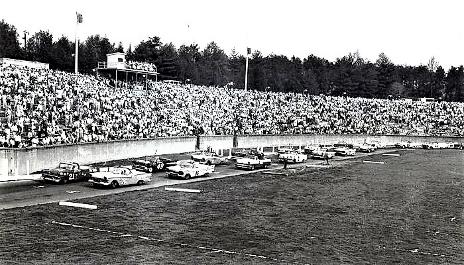
The track is NASCAR's longest running weekly race track. It is a tight 1/4 mile bull ring; an asphalt flat oval short track and longstanding football stadium located in Winston-Salem, North Carolina. It is one of stock car racing's most legendary venues and the tight confines leads to lots of beating and banging and upset feelings. Bowman Gray Stadium is part of the Winston-Salem Sports and Entertainment Complex and is home of the Winston-Salem State University Rams football team. It was also the home of the Wake Forest University football team from 1956 until Groves Stadium opened in 1968. Bowman Gray Stadium was a popular venue for high school football in the 1970s and 1980s. The stadium was built in 1937 as a public
works project to provide jobs during the Great Depression. In the beginning, the stadium's sole use was for collegiate football until trotter horse racing was added on the 0.250-mile dirt oval. The first auto racing at Bowman Gray was a type of midget car racing on the dirt quarter mile track from 1939 through 1949. The track was paved in 1947. Stock car racing at Bowman Gray Stadium was started by Bill France Sr. and Alvin Hawkins, two men who were founding fathers of NASCAR. The track was NASCAR's very first weekly track. The first NASCAR-sanctioned event took place in May 1949. It would be the first of 29 Cup races held there over a span
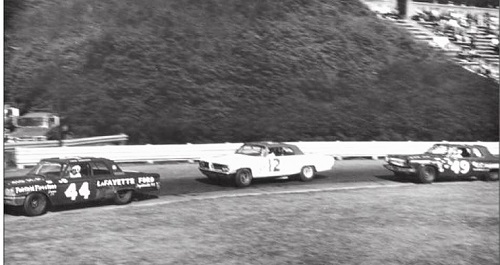
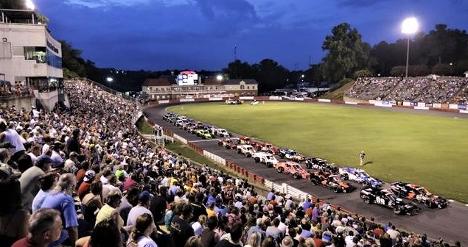
of 14 years. As the racing had become extremely popular at the track, an additional 7,000 seats were added in 1953, raising the seating capacity from 10,000 to 17,000. Many years would see as many as three Cup races held at the track. Bob Welborn would win the first race held there beating Rex White in the 150 lap event. The next race was extended to 200 laps and Lee Petty edged Shorty Rollins by five car lengths. Jim Reed beat Petty the following race as White came home third. Over the span of the next three years White and Glen Wood would dominate. White would win six times; while Wood won the other three races. The duo would finish 1-2 five times
in those nine events. In the mid-60's, Junior Johnson would win four of five races; all by more than a lap. Three times Richard Petty would run second. Starting in 1966 David Pearson, Petty and Bobby Allison made Bowman Gray their playground. Pearson won both races in 1966 and added another win in 1968. Petty won in 1967, 1969 sand 1970, while Allison won in 1967 and the tracks final race held in 1971. Along with Cup events; NASCAR also ran the Convertible Division at Bowman Gray. Five races were contested there. Curtis Turner won the initial two races; and then Bob Welborn won the next two races. The final convertible race saw Glen Wood start on the pole, bypass Welborn after 52 laps and go on to get the win. Welborn finished second. From 2005 - 2016 NASCAR would also see their Modified tour and K&N Series compete here. Bowman Gray has acquired the nickname, the "Madhouse," and is largely attributed to the racing antics that take place on the tight, quarter mile bull ring. In 2014, Bowman Gray's promoter, Gray Garrison described the events at BGS as part racing, part religion, and part wrestling. The nickname actually originated from a qualifying format the track used in
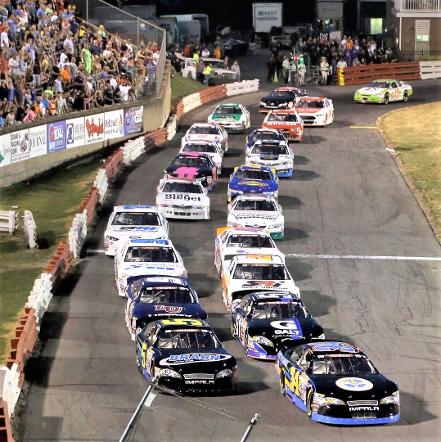
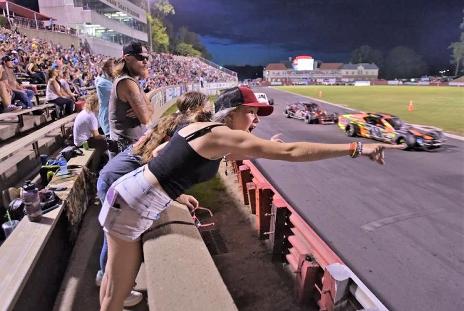
the 1950s called the "mad scramble." In 2015, Bowman Gray celebrated its 1,000th NASCAR sanctioned race. Bowman Gray is also the target of Cupid’s arrow. It’s famously known as the spot where Bill France Jr. met Betty Jane Zachery, who would later marry and give birth to two children. As legend has it, Bill Jr. was sent to the track to work for the summer where he first laid eyes on the local track beauty queen, better known as Betty Jane … and the rest, as they say, is history. Bowman Gray's weekly racing tradition continues as part of the Whelen All-American Series, with races Saturday evenings from the end of April through August. The season has to be wrapped up before football season. The track can seat 17,000 people in the stands, with an additional 2,000 standing-room around the wall above the seating areas. The weekly races during the
year normally have an average attendance between 12,000 and 15,000 per night. Many events are standing room only, as some events have had estimated crowds of more than 23,000 show up. Weekly races include the modified, sportsman, street stock and stadium stock divisions.
All Photos copyright and are property of their respective owners
